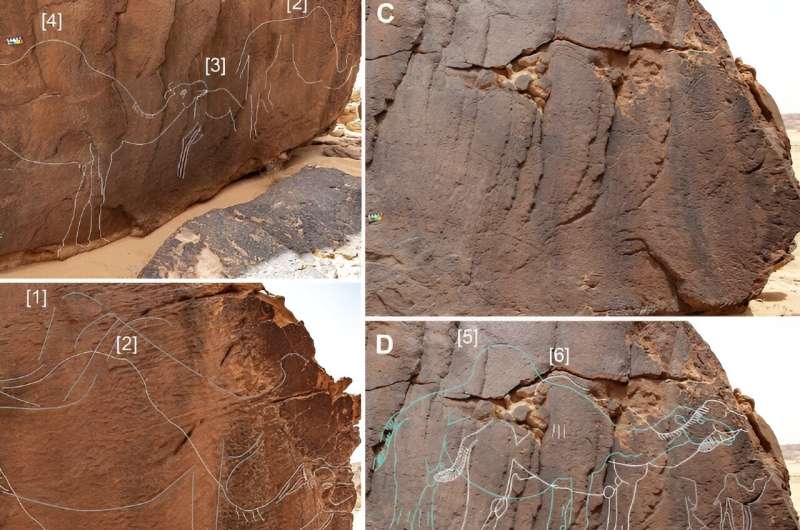An international team of archaeologists discovered a life-size painting of an extinct species of camel carved into rocks in Saudi Arabia. In his project featured in the magazine “Archaeological research in Asia”, The group discovered rock carvings in the Nefud Desert.
It is difficult for historians to learn more about the Neolithic Age due to the harsh environment in places such as Saudi Arabia; The heat, sand and rock do not help preserve traces of the people who lived there thousands of years ago. However, some evidence was found; for example, in a place called “Camel Field” in the northern part of the country, there are large rocks carved with life-size images of camels.
Carved camels have also been found elsewhere in Saudi Arabia; One discovered five years ago in Al Jouf province was described as a “life-size camel parade”. In this new study, the team examined a rocky outcrop near the southern tip of the Nefud Desert.
This outcrop was known to researchers, but when they looked closer, they discovered a work of art carved into the surface by people who lived in the area thousands of years ago. The new team found several dozen images of a camel species that has been extinct for thousands of years. Previous studies have shown that such camels once lived in the Arabian Peninsula. The ledge was called Sahout; Images were found in three of the formations.
The research team discovered that the paintings were made in layers by different groups of people living in different periods and carved into paintings made by their predecessors; the team could see the differences in technique and style. They also noted that most of the images were likely taken through the slits that protected them. Additionally, previous research has shown that other materials found in the general area date back approximately 8,000 years.
Researchers examining the artwork found that the paintings were likely made with stone tools and took up to two weeks to create. They also found some evidence that the carvings may have been a collaborative work.
